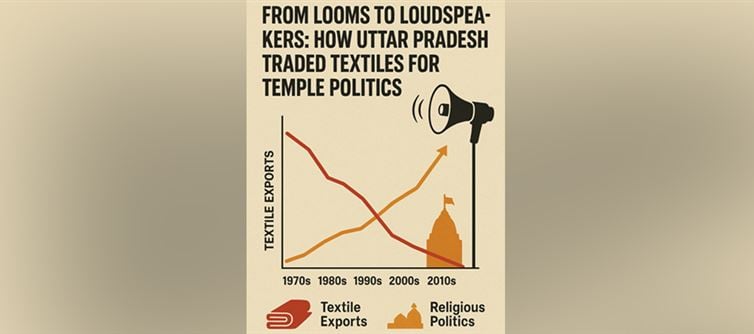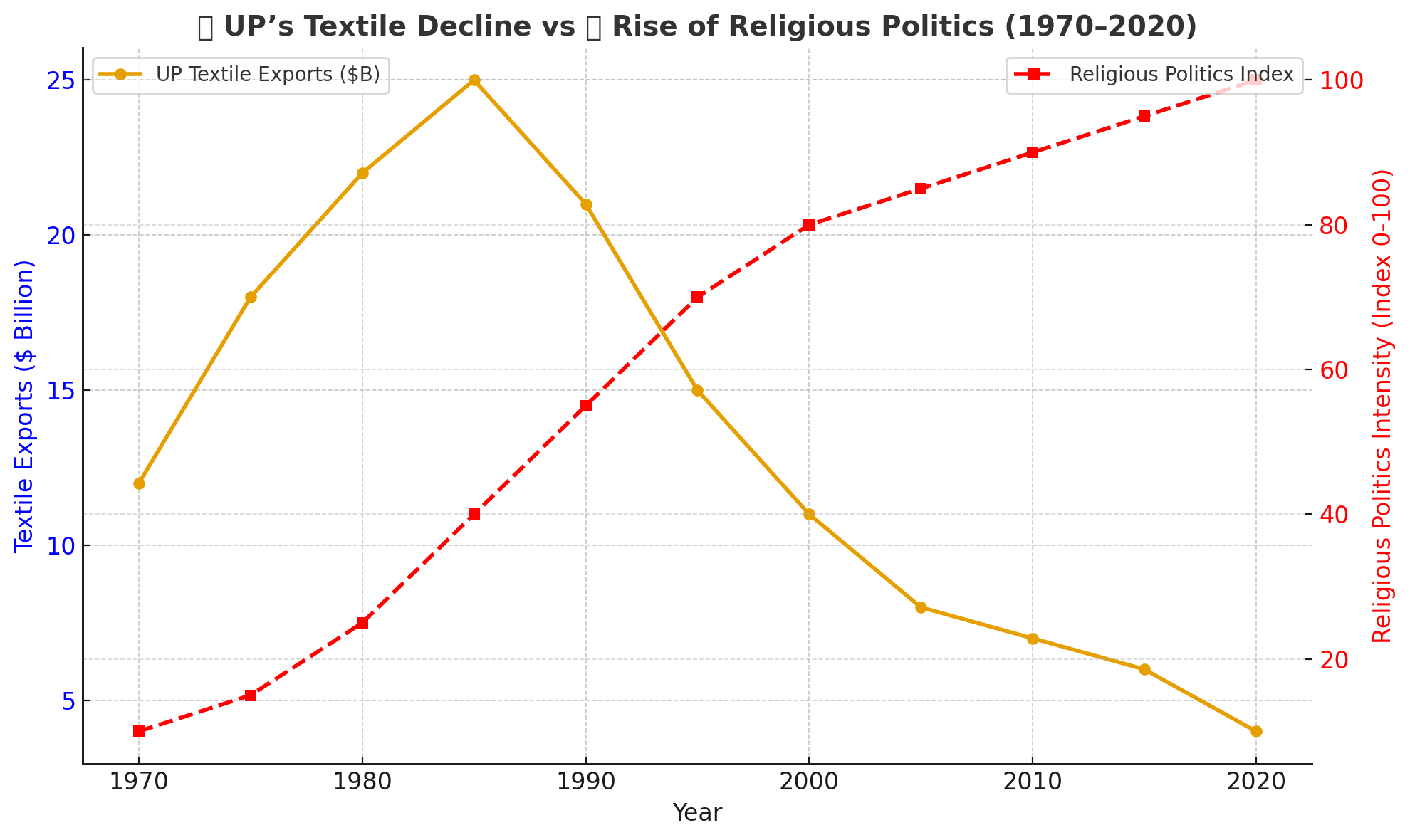
From Looms to Loudspeakers: How Uttar Pradesh Traded Textiles for temple Politics
Once upon a time, Uttar Pradesh was the beating heart of India’s textile economy. From the intricate chikan embroidery of lucknow to the famed Banarasi silk that travelled the world, UP’s cities were synonymous with craftsmanship, commerce, and cultural pride. Bareilly, Kanpur, lucknow, Varanasi—each was a thriving industrial hub that gave millions of artisans and traders a dignified livelihood.
Fast forward to today, and the picture is bleak. UP is no longer known for textiles, industry, or skilled exports. Instead, it makes headlines for religious flashpoints, caste-driven politics, and laws weaponizing ‘hurt sentiments.’
1. From Top-30 Cities to Migrant Workforce
Fifty years ago, UP easily had 7–8 cities in India’s top 30 economic centres. Today, its youth migrate en masse to Maharashtra, gujarat, Punjab, and South india in search of work. Many face ridicule and abuse over language and identity, reduced from proud artisans to daily-wage migrants.
2. Why the Decline?
Outdated Technology: While global textile giants modernized, UP’s looms and dyeing units remained stuck in the 1970s.
Poor Infrastructure: Erratic electricity, crumbling roads, and clogged logistics pushed industries to gujarat and tamil Nadu.
Corruption & red Tape: Entrepreneurs were suffocated under an inspector raj and political extortion.
Reservation Politics: Hiring and industrial policy often prioritized vote banks over skill and productivity.
Brain & Skill Drain: With no opportunity at home, the brightest are left.
3. What UP Chose Instead
Rather than industrial revival, UP’s political class chose the low-hanging fruit of religious mobilisation. The focus shifted from jobs and factories to temples and processions, from looms to loudspeakers.
New investment announcements rarely translate into factories on the ground.
Laws are passed to “protect sentiments” instead of protecting jobs.
Entire elections are fought not on employment, education, or export policy, but on which community gets appeased or punished.
4. The Cost of Faith-Over-Fact Governance
Textile exports from UP are now a shadow of tamil Nadu and Gujarat.
Artisans in varanasi or lucknow struggle to survive, often earning less than migrant construction workers.
Youth unemployment in UP remains among the highest in India.
By obsessing over religious supremacy and caste arithmetic, UP has systematically buried its own industrial potential.
5. The Way Forward
UP doesn’t lack talent. It lacks vision and priorities. To reclaim its lost glory:
Invest massively in infrastructure, power, and logistics.
Set up textile and industrial parks with modern technology.
Replace patronage-based politics with skill-focused policies.
Stop making faith a substitute for economic governance.
The Bottom Line
Uttar Pradesh could have been India’s Guangdong, a global economic hub of textiles and manufacturing. Instead, it has chosen the path of temple politics, caste games, and identity wars. Until the state shifts its priorities from religion to **real reforms—jobs, industry, education—UP’s youth will continue to migrate, and its glory will remain a memory.

📊 It shows UP’s textile exports steadily crashing from the 1970s onwards, while, in parallel, religious politics surged.
This visualization makes the contrast stark: instead of reviving industries, jobs, and infrastructure, the state’s political energy has been consumed by religion-first politics — leaving what was once a textile hub in economic ruins.




 click and follow Indiaherald WhatsApp channel
click and follow Indiaherald WhatsApp channel